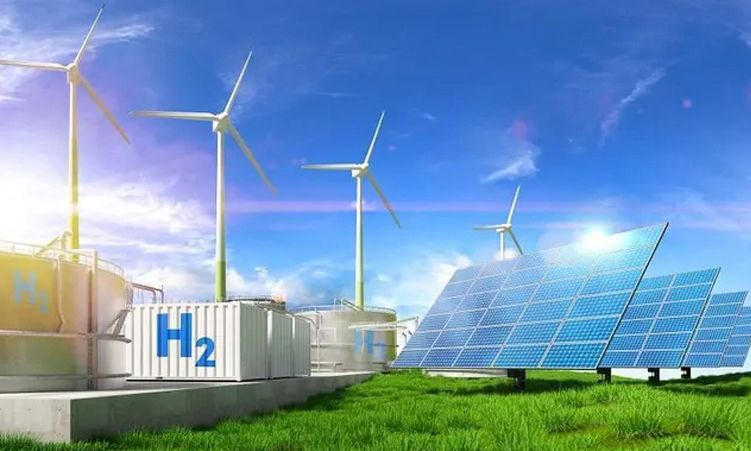THE Electricity Control Board (ECB) has given power utility NamPower the right to increase its bulk electricity tariffs by 10,2 per cent.
The increase will come into effect on July 1. Making the announcement yesterday, ECB CEO Siseho Simasiku said the decision was influenced by several factors.These included the need for tariffs to reach cost reflectivity over the next five years, the more expensive rate at which Namibia would have to import power from South Africa this year, the shortage of power supply in the region and the need for greater investment in power generation sources to make Namibia more self-reliant.Cost reflectivity means that the utility is allowed by the regulator to recover all costs of supplying electricity, including all operational, administrative and customer-care costs.The increased tariff also allows for a return on assets.In the wake of the increase, Regional Electricity Distributors (REDs) are likely to apply to the ECB to hike their electricity for sale to the ordinary residential and business consumer.The ECB said that by yesterday it had only received a request from one RED to increase their tariffs in line with the bulk rate increase, but expected applications from REDs and municipalities to stream in by mid-month.However, Simasiku warned that the ECB would not necessarily consider approving increases for REDs in line with the increase granted to NamPower as has been the case in the past, but would rather consider the application based on their revenue requirements.”They must give proper motivations.The ECB is there to protect the rights of the consumer,” said Simasiku.NamPower had asked for an increase of 12,58 per cent when it delivered its presentation to the ECB in April.Last year, the ECB approved a six per cent increase in the bulk electricity tariff.The average 10,2 per cent increase is made up of an 18 per cent increase on energy charges, 2,6 per cent on demand charges and a further 20 per cent on basic charges.Simasiku said it could be expected that the price of bulk electricity supply would increase by 10 per cent a year over the next five years.”At the current low prices which are not cost-reflective, Namibia will not be in a position to attract investors as cost-reflectivity is viewed as a pre-requisite for private investors.Therefore, electricity tariff increases are imminent,” Simasiku told the press in Windhoek.”All this means that Namibians will have to prepare themselves for substantial tariffs increases over the next five years.”Initially, Cabinet had agreed that cost-reflectivity in the electricity tariff should be attained by 2013.The ECB said it would avoid reviewing and adjusting the price of electricity more than once a year and the aim was to keep the increases in line with the new budgetary year.With South Africa hard-pressed to meet their own electricity needs in the wake of problems at its nuclear power station in Cape Town, NamPower has entered into a less-favourable purchasing agreement with its counterpart Eskom.As part of demand-side management (measures for more efficient electricity usage) investigations by the ECB, Simasiku said the regulator would look into adjusting electricity tariffs in line with the period of usage.This would mean that it would be more expensive to use electricity in peak periods – especially in the early evening – and consumers would not be charged when they do not use electricity as is currently the case.The implementation of DSM measures is only expected to come into effect later this year.But the ECB is appealing to consumers to start implementing saving measures such as replacing incandescent bulbs with compact fluorescent lights which use six times less electricity while giving the same light output levels.Consumers are also encouraged to switch off geysers, which are one of the largest electricity consumers in the average household.They are also advised to avoid cooking and the use of electrical heaters or air conditioners during peak hours.Making the announcement yesterday, ECB CEO Siseho Simasiku said the decision was influenced by several factors.These included the need for tariffs to reach cost reflectivity over the next five years, the more expensive rate at which Namibia would have to import power from South Africa this year, the shortage of power supply in the region and the need for greater investment in power generation sources to make Namibia more self-reliant.Cost reflectivity means that the utility is allowed by the regulator to recover all costs of supplying electricity, including all operational, administrative and customer-care costs.The increased tariff also allows for a return on assets.In the wake of the increase, Regional Electricity Distributors (REDs) are likely to apply to the ECB to hike their electricity for sale to the ordinary residential and business consumer.The ECB said that by yesterday it had only received a request from one RED to increase their tariffs in line with the bulk rate increase, but expected applications from REDs and municipalities to stream in by mid-month.However, Simasiku warned that the ECB would not necessarily consider approving increases for REDs in line with the increase granted to NamPower as has been the case in the past, but would rather consider the application based on their revenue requirements.”They must give proper motivations.The ECB is there to protect the rights of the consumer,” said Simasiku.NamPower had asked for an increase of 12,58 per cent when it delivered its presentation to the ECB in April.Last year, the ECB approved a six per cent increase in the bulk electricity tariff.The average 10,2 per cent increase is made up of an 18 per cent increase on energy charges, 2,6 per cent on demand charges and a further 20 per cent on basic charges.Simasiku said it could be expected that the price of bulk electricity supply would increase by 10 per cent a year over the next five years.”At the current low prices which are not cost-reflective, Namibia will not be in a position to attract investors as cost-reflectivity is viewed as a pre-requisite for private investors.Therefore, electricity tariff increases are imminent,” Simasiku told the press in Windhoek.”All this means that Namibians will have to prepare themselves for substantial tariffs increases over the next five years.”Initially, Cabinet had agreed that cost-reflectivity in the electricity tariff should be attained by 2013.The ECB said it would avoid reviewing and adjusting the price of electricity more than once a year and the aim was to keep the increases in line with the new budgetary year.With South Africa hard-pressed to meet their own electricity needs in the wake of problems at its nuclear power station in Cape Town, NamPower has entered into a less-favourable purchasing agreement with its counterpart Eskom.As part of demand-side management (measures for more efficient electricity usage) investigations by the ECB, Simasiku said the regulator would look into adjusting electricity tariffs in line with the period of usage.This would mean that it would be more expensive to use electricity in peak periods – especially in the early evening – and consumers would not be charged when they do not use electricity as is currently the case.The implementation of DSM measures is only expected to come into effect later this year.But the ECB is appealing to consumers to start implementing saving measures such as replacing incandescent bulbs with compact fluorescent lights which use six times less electricity while giving the same light output levels.Consumers are also encouraged to switch off geysers, which are one of the largest electricity consumers in the average household.They are also advised to avoid cooking and the use of electrical heaters or air conditioners during peak hours.
Stay informed with The Namibian – your source for credible journalism. Get in-depth reporting and opinions for
only N$85 a month. Invest in journalism, invest in democracy –
Subscribe Now!










